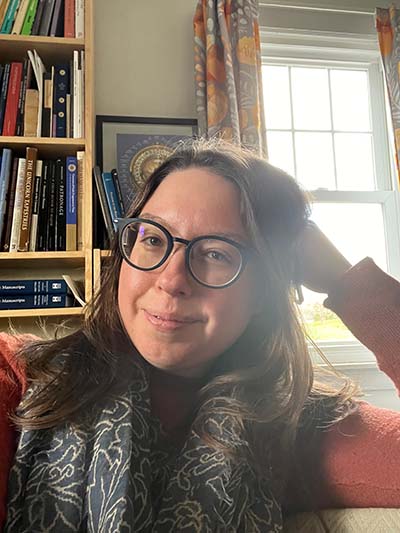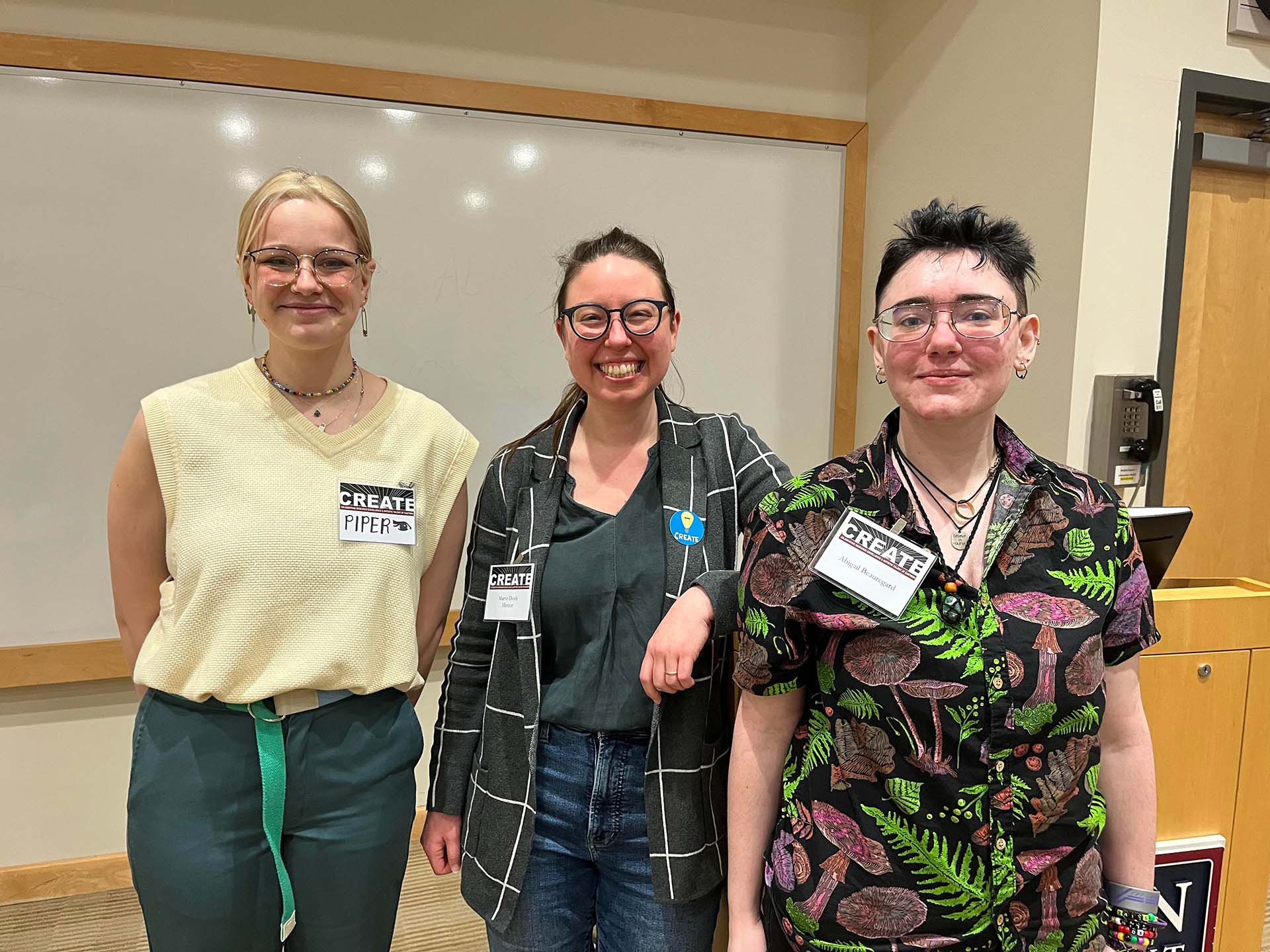- Apply
- Visit
- Request Info
- Give
Maeve Doyle - Assistant Professor, Art and Art History
Ph.D., Bryn Mawr Tell us your story. What led you to Eastern?
Tell us your story. What led you to Eastern?
“I had the rare fortune to spend my whole education in small, liberal arts institutions. I love the personal, hands-on learning that places like Eastern foster. I sought it out as a student, and I’m thrilled to be part of Eastern’s public liberal arts mission today.”
Tell us about your research and/or creative endeavors.
“My main research focuses on the visual culture of medieval Europe, especially decorated books (illuminated manuscripts), one of the most important art forms of the period. One of the things that drew me to manuscripts was that in order to study them, you have to hold them, touch them, turn the pages. I’ll never get over the excitement of a personal encounter with an old book.”
What do you find most rewarding about teaching at Eastern?
“The students!! Our small classes mean I get to know every student who takes a course with me. I love seeing their personalities and creativity come through in their work, whether it’s a research project, a work of art, or questions or comments they share in or after class. Small classes also mean I often teach students multiple times, especially Art majors, and I get to see how they’ve grown from their first to their senior years.”
No matter what career you pursue, and no matter where your future takes you, art history gives you skills to adapt, succeed, and thrive.

What is your teaching philosophy?
“I like to think of my classroom as an art history laboratory — a space for students to build their skills of looking, listening, reading, and thinking critically. These aren’t just skills for art history, they’re skills for life! We live in such a highly visual culture that we often don’t think about the role of images in our daily lives — we take them at face value. By interrogating the ideas and assumptions embedded within images, we reshape our visual world into the image of the society we want to be.”
What is one piece of career advice you would give to students who are studying art and art history?
“Students who study art history graduate with so many skills: they’re observant, detail-oriented, excellent communicators, and strong in research and information literacy. No matter what career you pursue, and no matter where your future takes you, art history gives you skills to adapt, succeed, and thrive.”

